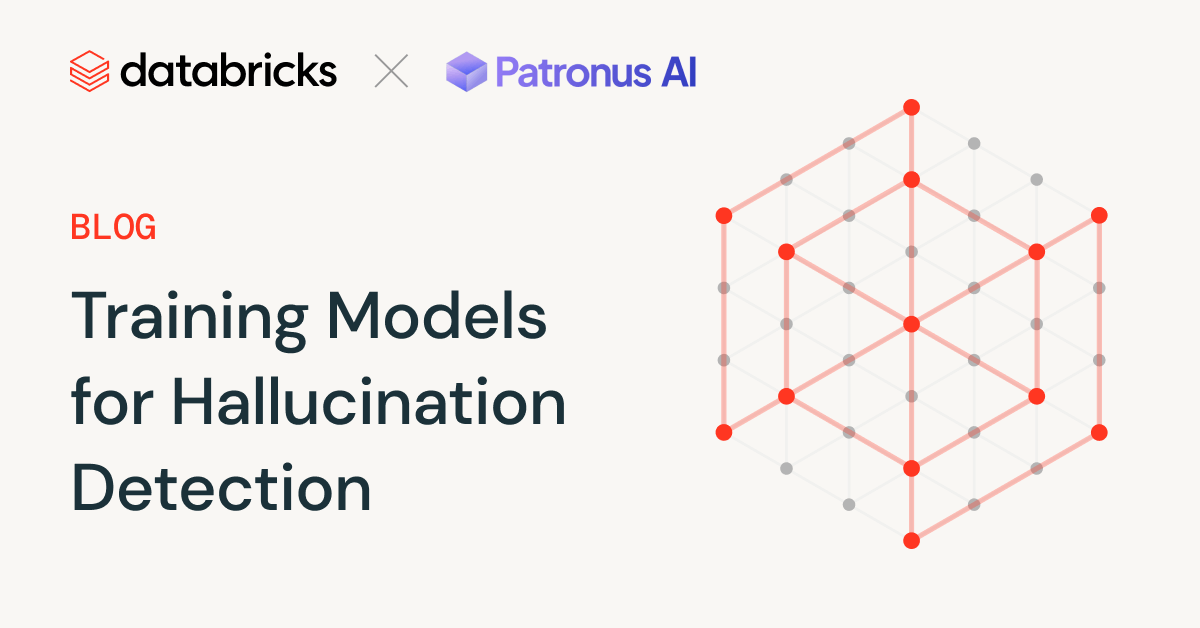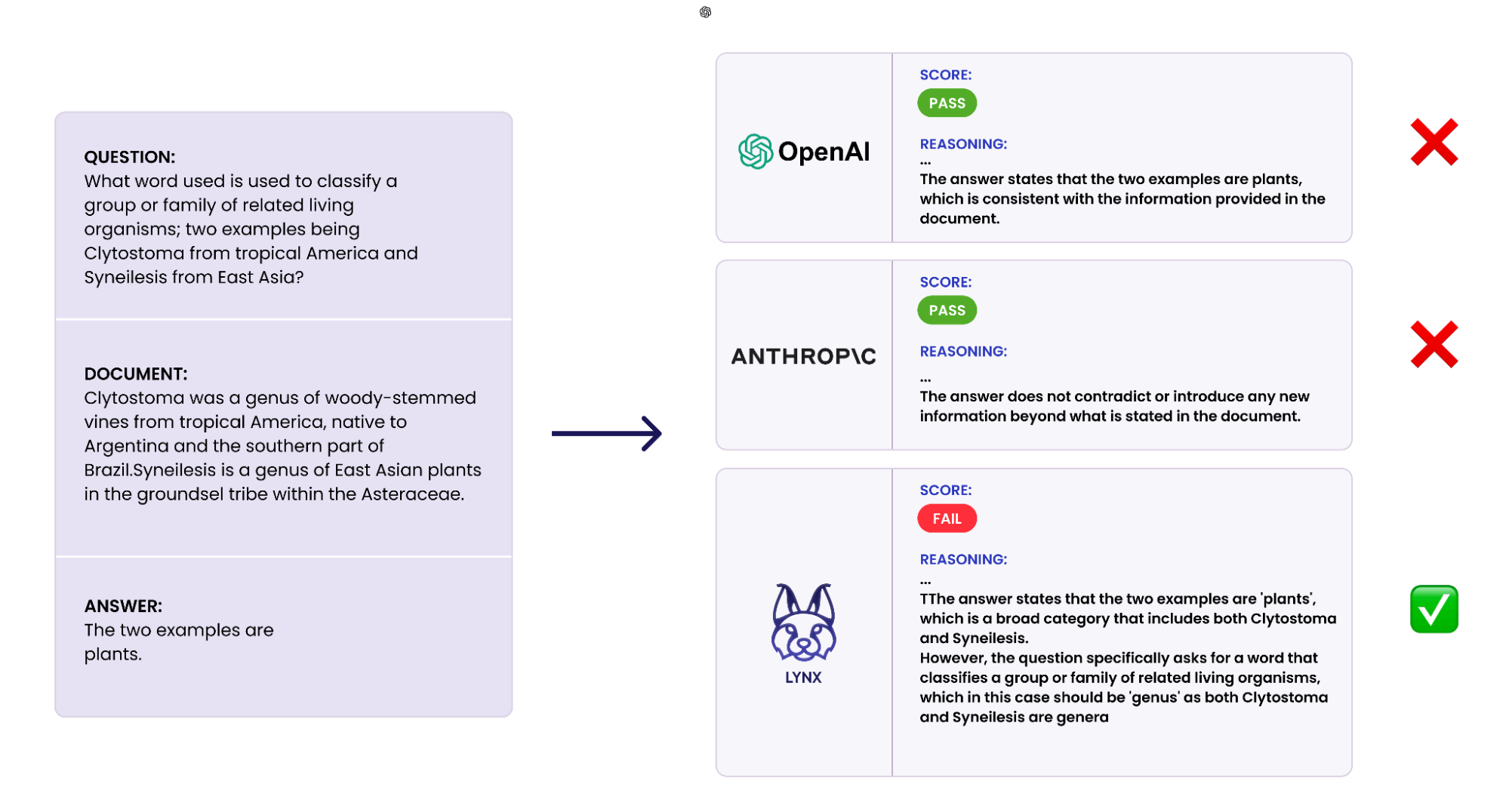Patronus AI x Databricks: Training Models for Hallucination Detection

Hallucinations in large language models (LLMs) occur when models produce responses that do not align with factual reality or the provided context. This problem is challenging for LLM practitioners developing RAG applications where LLM outputs have access to user-provided documents. For example, if LLMs being used for financial question-answering or medical diagnosis produce responses that deviate from source documents, users are exposed to misinformation with significant negative consequences.
The LLM-as-a-judge paradigm has grown in popularity for detecting inaccuracies in generative AI application responses, due to its flexibility and ease of use. However, even when using top-performing models like GPT-4, LLM-as-a-judge frequently fails to evaluate responses to complex reasoning tasks accurately. Additionally, there are concerns about the quality, transparency and cost of closed-source LLMs. However, there is a significant gap in performance between open source and closed-source models used for evaluation tasks due to the lack of challenging and domain-specific publicly available datasets.
At Patronus AI, we recognized the need for an automated LLM evaluation platform to instill confidence in enterprises deploying GenAI models. That’s why we built Lynx, a SOTA hallucination detection model that is capable of using complex reasoning to identify conflicting outputs. In experiments, we found that Lynx outperformed all existing LLM-as-a-judge evaluators using closed and open source models. In domain-specific tasks, this difference was even more pronounced, with a 7.5% difference in medical question-answering.

In this blog, we describe the process of training a SOTA hallucination detection LM with LLM Foundry, Composer and Mosaic AI Model Training.
Lynx-70B-Instruct is a finetuned Llama-3-70B-Instruct model. (In our experiments, we finetuned several additional open source models and show full results in our paper.) We chose Databricks Mosaic AI tools, including the LLM Foundry, Composer, and training cluster, because they offered more customization options and support for a wide range of language models.
We first constructed our training and evaluation datasets for a hallucination identification task using a perturbation process (see our paper for more details). To create a fine-tuning job on the Databricks Mosaic AI training infrastructure, we create a config similar to the following:
We then scheduled training jobs using the Databricks Mosaic AI CLI:
For supervised finetuning on 70B models, we trained on 32 NVIDIA H100 GPUs, for an effective batch size of 256. To enhance performance, we used native optimizations in Composer, including FSDP and flash attention.
To view results in real-time, we used the WandB integration with LLM Foundry to log training results to the WandB dashboard. The Mosaic AI Training console makes it easy to monitor run status, including completion status and job history from teammates.

Mosaic AI’s training platform abstracts away the complexities of deploying training runs across multiple clusters and compute providers. A training run can be launched on a GPU cluster on one cloud provider (e.g., AWS) and shifted to another provider (e.g. GCP) with no additional effort. Clusters are monitored for network and GPU faults within the training console, automatically cordoning faulty hardware to mitigate downtime.
Our results on HaluBench show that our finetuned model outperforms closed-source LLMs and open source LLMs when used as judge evaluator LMs across different tasks. Lynx outperformed GPT-4o by almost 1% in accuracy averaged across all tasks, and is the best-performing open-source model by a wide margin.

We are excited to open source Lynx and HaluBench to advance research in RAG evaluations.
Download Lynx on HuggingFace:
https://huggingface.co/PatronusAI/Llama-3-Patronus-Lynx-8B-Instruct
https://huggingface.co/PatronusAI/Llama-3-Patronus-Lynx-70B-Instruct
https://huggingface.co/PatronusAI/Llama-3-Patronus-Lynx-8B-Instruct-Q4_K_M-GGUF
Download HaluBench on HuggingFace:
https://huggingface.co/datasets/PatronusAI/HaluBench
See a visualization of HaluBench on Nomic Atlas:
https://atlas.nomic.ai/data/patronus-ai/halubench/map
Read the full paper:
https://arxiv.org/abs/2407.08488

